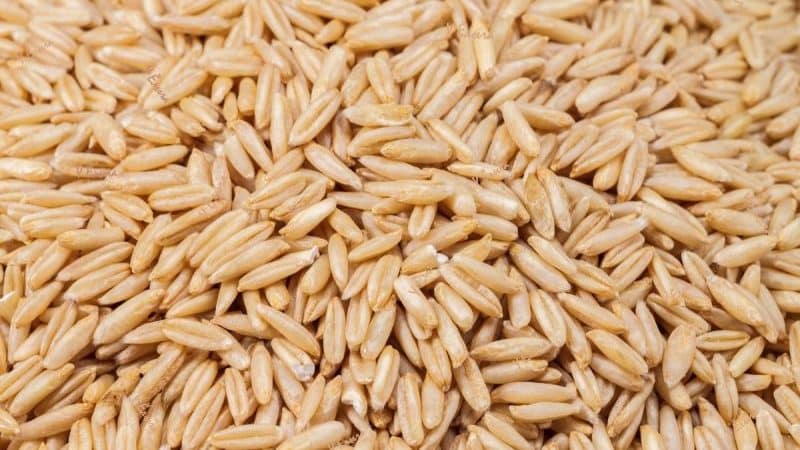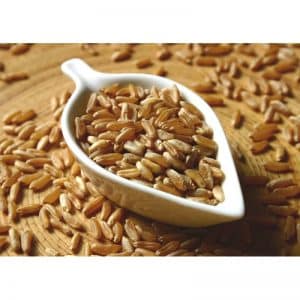Useful properties and features of growing naked oats
Nutritionists recommend including oats in the diet for various diseases and for weight loss. And it is advised to pay special attention to bare oats. It contains twice as much protein as filmy varieties, and about 11% of the total mass is occupied by fiber, which cleanses the body of toxins.
Hulless oats have a minimum of contraindications, strengthen the immune system, shorten the recovery period after physical and mental stress, as well as previous diseases.
What are hull oats?
Oatmeal and flour can be found on the shelves of almost every store. But not everyone is familiar with the valuable variety of this cereal - naked oats.

History of appearance
The crop began to be grown in the second millennium AD in Mongolia and China. Gradually it spread throughout the planet. At first, oats grew like a weed in fields sown with spelled, but landowners quickly realized that the plant was useful and began to specially cultivate it in their plots.
The cereal was brought to the Soviet Union from Tibet by order of the authorities. The naked variety was intended for the party elite, whose diet consisted exclusively of environmentally friendly products with high nutritional value.
Description and characteristics of the plant
Naked (or gymnosperm) oats are a type of cereal whose grains are not covered with a membrane. This product is popular among fans of healthy eating. In terms of the content of nutrients, it is second only to green buckwheat.
What are the advantages
Cereals that do not have a hard shell are ideal raw materials for germination. In addition, during the production of cereals, bare oats undergo minimal processing. There is no need to remove the husks, so the grains remain intact and do not lose nutrients.
Economic importance and application
Due to its high nutritional value, the naked variety is used in many areas:
- Feed for livestock. Cereal grains and straw are irreplaceable ingredients of feed for poultry, horses, and young cattle.
- Medicine. It is used to prepare dietary decoctions, porridges and soups that envelop the walls of the gastrointestinal tract.
- Cosmetology. Masks, lotions and compresses are made from oatmeal flour to help with skin diseases.
- Cooking. The range of products made from oats is constantly expanding. In addition to the usual cereals, flakes and flour, there is oat milk on store shelves, which has become an excellent substitute for dairy products of animal origin for allergy sufferers and vegetarians.
- Vegetable growing. Hull oats are often grown as a precursor to other crops to enrich the soil and prevent the development of root rot.
- Alcohol. The grain is used to make oat beer, the taste of which is reminiscent of high-quality barley varieties, as well as kvass, mash and vodka.
Chemical composition, microelements, calorie content
Hulless oats have a balanced composition. It contains important amino acids, vitamin E, known for its antioxidant effect. The grain also contains carotene, B vitamins, vitamin K and others.
Cereals are rich in selenium, iron, sulfur, fluorine, iodine, manganese, chromium, nickel and zinc.
Reference! When such grains sprout, the vitamin C content per 100 g increases from 0.88 mg to 13.82 mg, and the amount of antioxidants changes from 34 mg to 334 mg.
100 g of grain contains 17 g of protein, 61.3 g of carbohydrates and 3.5 g of fat. Calorie content – 305 kcal.
Useful and healing properties of naked oats
The benefits of oat products are difficult to overestimate. Regular consumption of this cereal is an important contribution to your own health.
How it affects the body
Cereal has many beneficial properties:
- keeps the body in good shape;

- increases immunity and endurance;
- stimulates the activity of cognitive processes;
- normalizes intestinal microflora;
- speeds up metabolism;
- prevents caries;
- increases the elasticity of the epidermis;
- improves the functioning of the genitourinary system;
- improves the condition of patients undergoing radiation and chemotherapy;
- helps in the treatment of adenoma, mastopathy and other diseases;
- stimulates intestinal function;
- cleanses the body of toxins;
- strengthens bones, reduces the risk of osteoporosis;
- reduces cholesterol and blood sugar levels;
- normalizes hormonal levels.
Of particular importance is the introduction sprouted naked oats into children's diets. Such nutrition provides energy to an actively developing body, allows you to feel full longer and cope with intellectual tasks more easily.
Cereals also benefit older people. They are easily digested and do not create a burden on the body, while giving strength and energy. And athletes who regularly consume naked oats note that their endurance increases and their training is more effective.
Important! There are oats on sale that are specially designed for sprouting. But such a product will not bring any benefit to the body.In order for cereals to be stored for a long time, they are treated with toxic chemicals.
Possible harm
Eating naked oats can lead to a deterioration in health in the presence of the following pathologies:
- kidney diseases;
- allergies to cereals;
- gallbladder lesions;
- severe migraines;
- heart failure;
- gastritis with high acidity.
If diarrhea begins after eating cereals, stop taking oats.
Features of cultivation
You can grow environmentally friendly grain yourself. Oats are undemanding to care, but in order for the harvest to be good, it is important to follow certain rules.
Choosing a landing site
Oats have a developed root system that can go to a depth of up to 120 cm. Thanks to this, the crop thrives on clay, sandy, soddy-podzolic soils, as well as on loams. With proper care, the plant adapts even to swampy and peaty soil. Only saline soil is not suitable for cultivation.
Soil preparation
Before sowing, it is recommended to apply nitrogen fertilizers to the soil at the rate of 40-60 kg/ha. Organic compounds have a particularly beneficial effect on the growth of crops, but the crop also tolerates mineral fertilizing.
Important! Excess nitrogen can cause oats to wilt.
To normalize the composition of acidic soil, use alkaline masses containing nitrogen or phosphate rock.
Seed preparation
Before planting, the grains are sorted, separating suitable material from debris. Damaged seeds are not used for planting. After this, the grains are dipped for 20 minutes in a 1% solution of potassium permanganate for disinfection, and then washed in running water.
Planting scheme and technology
Oats are planted at the same time as other spring crops, when the soil has already thawed, but has not yet dried out under the rays of the hot sun. Usually this period begins at the end of April.
The seeds of naked oats are relatively light, so they are not planted too deeply. If the soil is well moistened, it is enough to immerse the grains by 4 cm, and if drought is expected - by 7 cm. For light, crumbly soil, the optimal planting depth is 6 cm. The distance between rows is from 7 to 15 cm.
Treatment against diseases and pests
Oats are affected by the following diseases:
- Dusty smut. The panicles of the plant turn black, covered with brownish-black spores, which separate when the wind blows and settle on neighboring stems. Solid smut differs from dusty smut in the density of fungal spores, which are destroyed only during threshing. Diseases are introduced with seeds, so planting material must be pickled in a weak solution of potassium permanganate or formaldehyde.
- Linear and crown rust. In summer, the leaves of the plant are covered with elongated orange tubercles, inside of which there are fungal spores. In August, grayish pads form on the underside of the leaf blades. To prevent the development of the disease, the crop is planted in a timely manner, the nitrogen content in the soil is controlled and the crop is not sown immediately after fertilizing the land with manure.
- Spotting. The lower surface of the leaves is covered with brown spots with dark dots. After some time, the damaged parts of the plant dry out. To prevent spotting from harming the grain harvest, treat the planting material thoroughly.
If pests such as nematodes, ground beetles and grain flies are detected, the crops are sprayed with fungicides.
Features of care
Oats love moisture. Its need for liquid is especially great 10-15 days before spawning. Growing a crop during a drought and insufficient watering negatively affects the yield.
It is necessary to remove weeds in a timely manner. In a small area, this can be done manually, and when growing oats on an industrial scale, weeds are removed using the herbicides Herbitox, Diamax, Lintur, Tornado 500 and others.
Tips and tricks for growing and using

When growing crops, experts advise taking into account the following points:
- Do not grow oats on the same land two years in a row.
- Oats are planted after winter or spring wheat, as well as after leguminous plants. In addition, potatoes and corn are good predecessors.
- If you sow oats in the place where beets grew a year ago, the crop may be affected by a nematode.
- If oats are planned to be used for baby and medical nutrition, the use of fertilizers and pesticides is limited.
To get the maximum amount of nutrients, oats are used in the form of sprouts or an infusion is made from it. To prepare the infusion 1 tbsp. l. The beans crushed in a coffee grinder should be poured into a thermos, pour 200 ml of boiling water and leave for 6-8 hours. It is recommended to drink 100 ml of the strained broth in the morning and evening.
This is interesting:
Conclusion
Oats are an unpretentious crop, widely used in industry, dietary and medical nutrition. Regular consumption of naked oats increases stamina and prevents the development of many diseases. This product rarely causes allergies, so it is given even to children.
It is not difficult to grow cereal yourself; caring for it does not take much time.